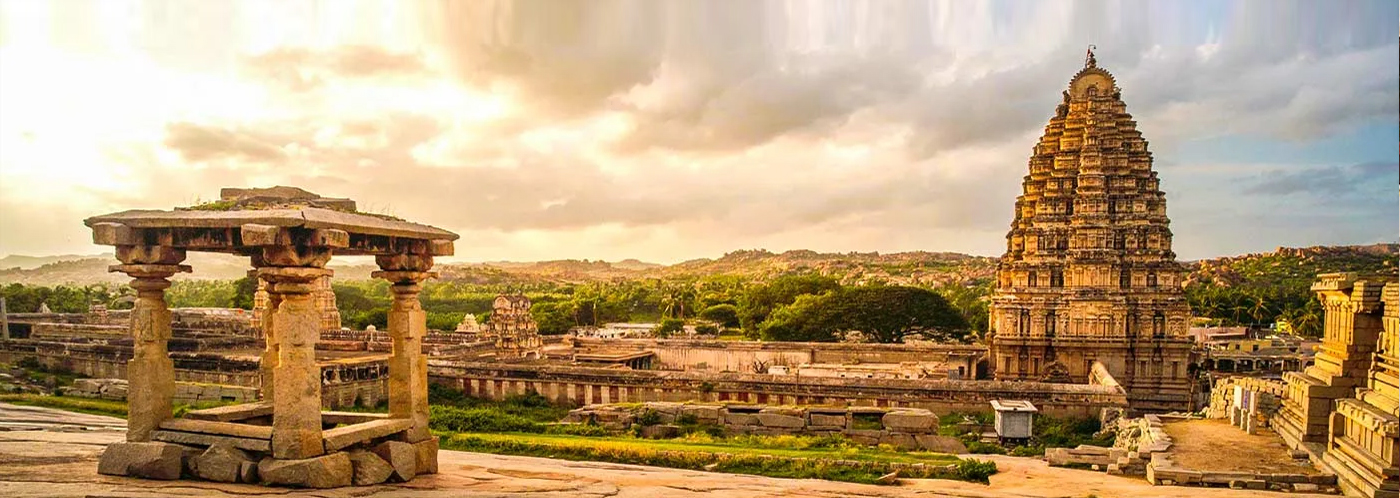Hampi
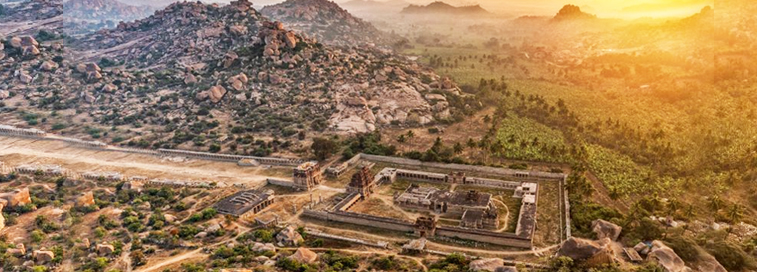
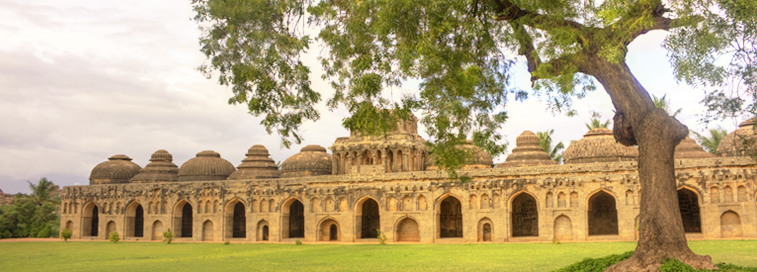
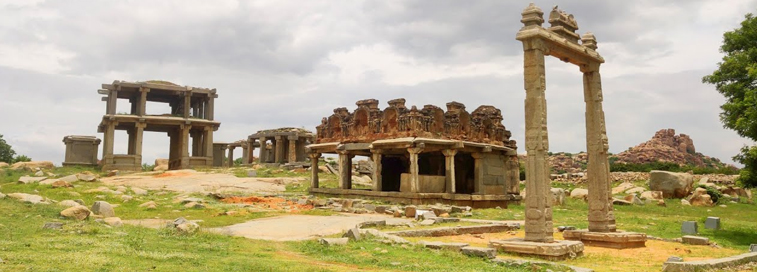
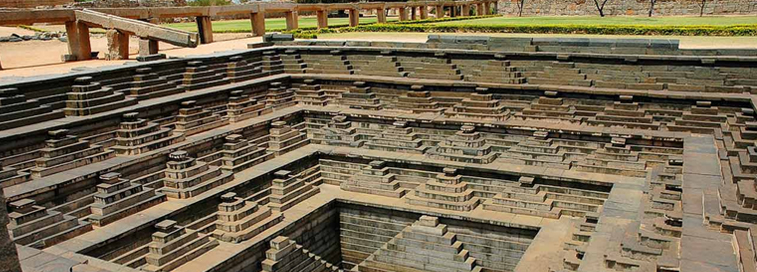
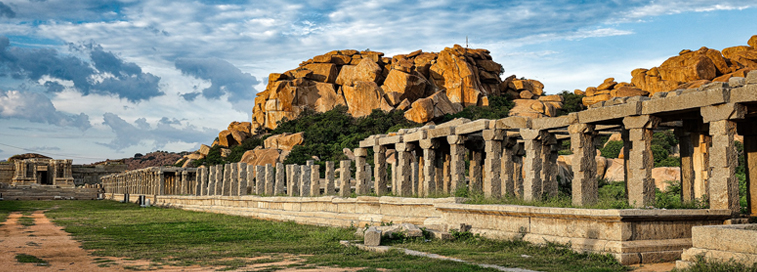
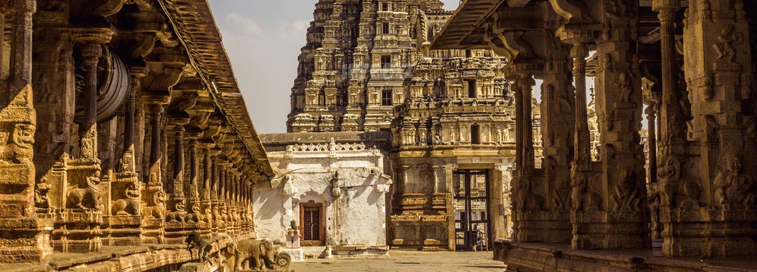
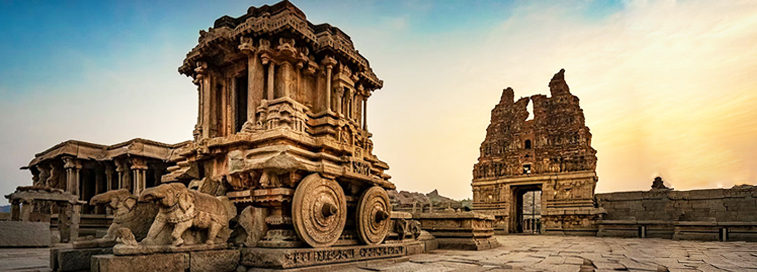
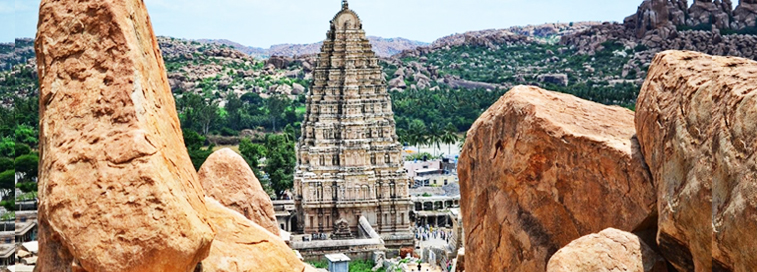
Hampi is a village in northern Karnataka state, India. It is located within the ruins of Vijayanagara, the former capital of the Vijayanagara Empire. Predating the city of Vijayanagara, it continues to be an important religious centre, housing the Virupaksha Temple, as well as several other monuments belonging to the old city. The ruins are a UNESCO World Heritage Site, listed as the Group of Monuments at Hampi.Hampi formed one of the core areas of the capital of the Vijayanagara Empire from 1336 to 1565. Hampi is bounded by the torrential Tungabhadra river on one side and surrounded by defensible hills on the other three sides.The site is significant historically and architecturally. The topography abounds with large stones which have been used to make statues of Hindu deities.
Vittala Complex
As the epicenter of Hampi's attractions, Vittala Temple is the most extravagant architectural showpiece of Hampi. No amount of words can explain this spectacle. The temple is built in the form of a sprawling campus with compound wall and gateway towers. There are many halls, pavilions and temples located inside this campus.The temple was originally built in the 15th century AD. One, typically accesses the campus through the eastern entrance tower.
Stone Chariot :- On entering through this massive tower, the first thing draws your attention would be a series of compact platforms along the central axis of the campus. At the end of these platforms stands the Stone Chariot. This is in fact a shrine built in the form of a temple chariot. An image of Garuda (the eagle god) was originally enshrined within its sanctum.
On leaving the Stone Chariot you reach the main hall in front of the Vittala temple. This hall though partially damaged is still awe inspiring. Facing the Stone Chariot, a series of steps flanged by elephant balustrades gives access to this elevated open hall called the Maha-Mantapa (the great hall).The main highlight of the Maha-Mantapa is its richly carved giant monolithic pillars.
Virupaksha Temple
Virupaksha temple is the oldest and the principal temple in Hampi. This temple is located on the south bank of the river Tungabadra. This area in general has been an important pilgrimage centre for the worshipers of lord Shiva. It is believed that this temple has been functioning uninterruptedly ever since its inception in the 7th century AD.That makes this, one of the oldest functioning temples in India.
Achyutaraya Temple
Consecrated in AD 1534, this temple is an example of Vijayanagara style temple architecture in its most advanced form than any other temples in Hampi. To the west of the main shrine is the twin chambered shrine of the goddess. A close look at the carvings on the pillars in the halls can reveal many themes like lord Krishna playing flute and the calves watching it with interest, lord Vishnu blesses an elephant, the infant Krishna dances holding the snake by its tail.
Lakshmi Narasimha Temple
This has the largest statue in Hampi. Narasimha is sitting on the coil of a giant seven-headed snake called Sesha. The heads of the snake acts as the hood above his head. The god sits in a cross-legged Yoga position with a belt supporting the knees. Narasimha (means half-man half-lion in local languages) is one of the ten incarnations (avatar) of Lord Vishnu.
Elephant Stable
One among the few least destroyed structures in Hampi, Elephant Stable is a major tourist attraction. This long building with a row of domed chambers was used to 'park' the royal elephants. There are 11 domed tall chambers; some of them are inter- connected. The center one is specially decorated and big. Probably the musicians and the associated band troupes had been using this during ceremonies involving elephant processions.
The King's Balance
This 5-meter or so tall 'balance' is located near the Vittala temple. Also called as Tula Bhara or Tula Purushadana, the king used to weigh himself with gold, gems, silver and precious stones, and distributed to the priests.It's believed that this had been done during the special ceremony seasons like solar or lunar eclipses. You can spot three loops on top of the balance, into which the balance actually hung.
Aqueducts and Canals
The whole of Hampi is crisscrossed with a network of irrigation canals of varying size. Connecting everything from temples to palaces to tanks to quarters to the agricultural lands, many of them were made during the Vijayanagara days. A good number of them, especially the ones run along the valley area, are still in use.The major canals made by the Vijayanagar kings are the Raya Canal (King's canal), Basavanna Canal (Nandi or Bull canal), Turthu Canal (Fast Canal) and the Kamalapura water tank. All of them are still in use (for agricultural irrigation of the near by village fields). Inside the Royal area you can see a number of stone aqueducts connecting 20 or so wells and ponds. Most of it is in the ruined stage, but you can still see the sophistication of the water supply system.
Matanga Hill
Matanga hill top is located at the centre of Hampi, and also the highest point. It is the best spot to get an aerial view of Hampi and it's environs. There are a couple of paths leading to the topmost point where the Veerabhadra Temple is located. The most popular is a stepped ramp at the west and the other, a tedious but thrilling treker's trail located a bit north of the stepped path. The steps are reasonably intact and they are as old as the Vijayanagara kingdom. There are multiple trails at the foothill that leads you to the bottom of the stepped way. The rooftop of the Veerabhadra Temple at the summit is the ideal place to the sunrise and sunset of Hampi.
Hampi Bazaar
Also known as Virupaksha Bazaar, this street is located in front of the Virupaksha temple . About a kilometer long, the east end of the temple ends at the foothill of the Matanga Hill . Both sides of the street are lined with a series of old pavilions, some of them are two storied. These structures were once part of a thriving market and residence of the nobles.


